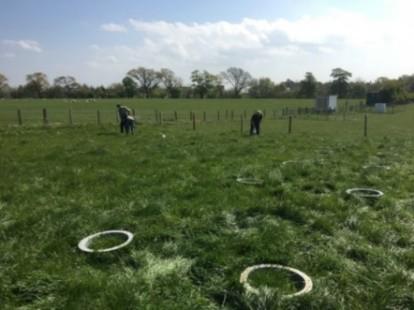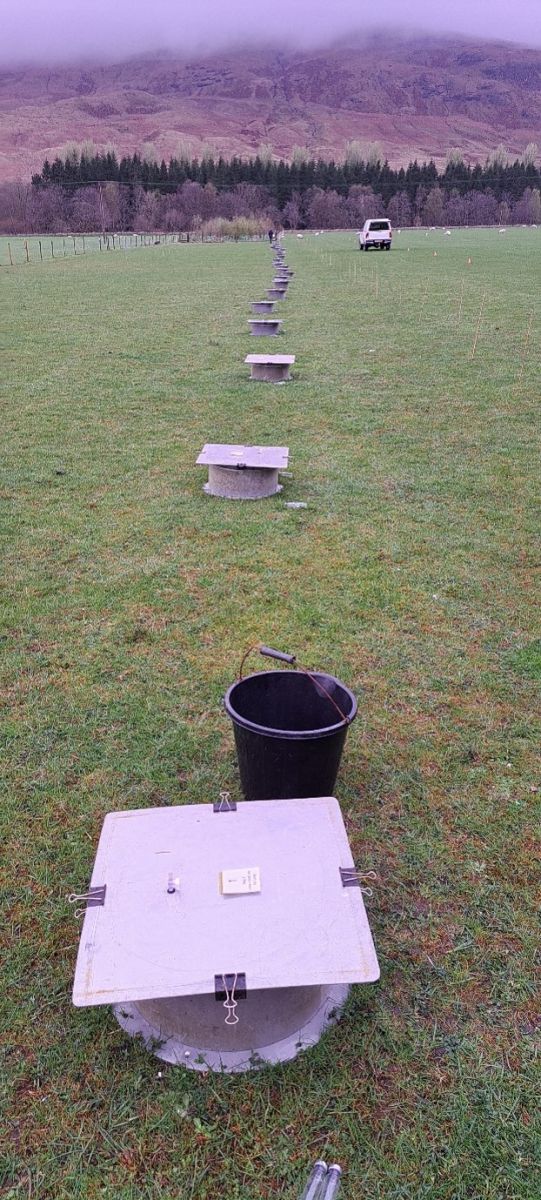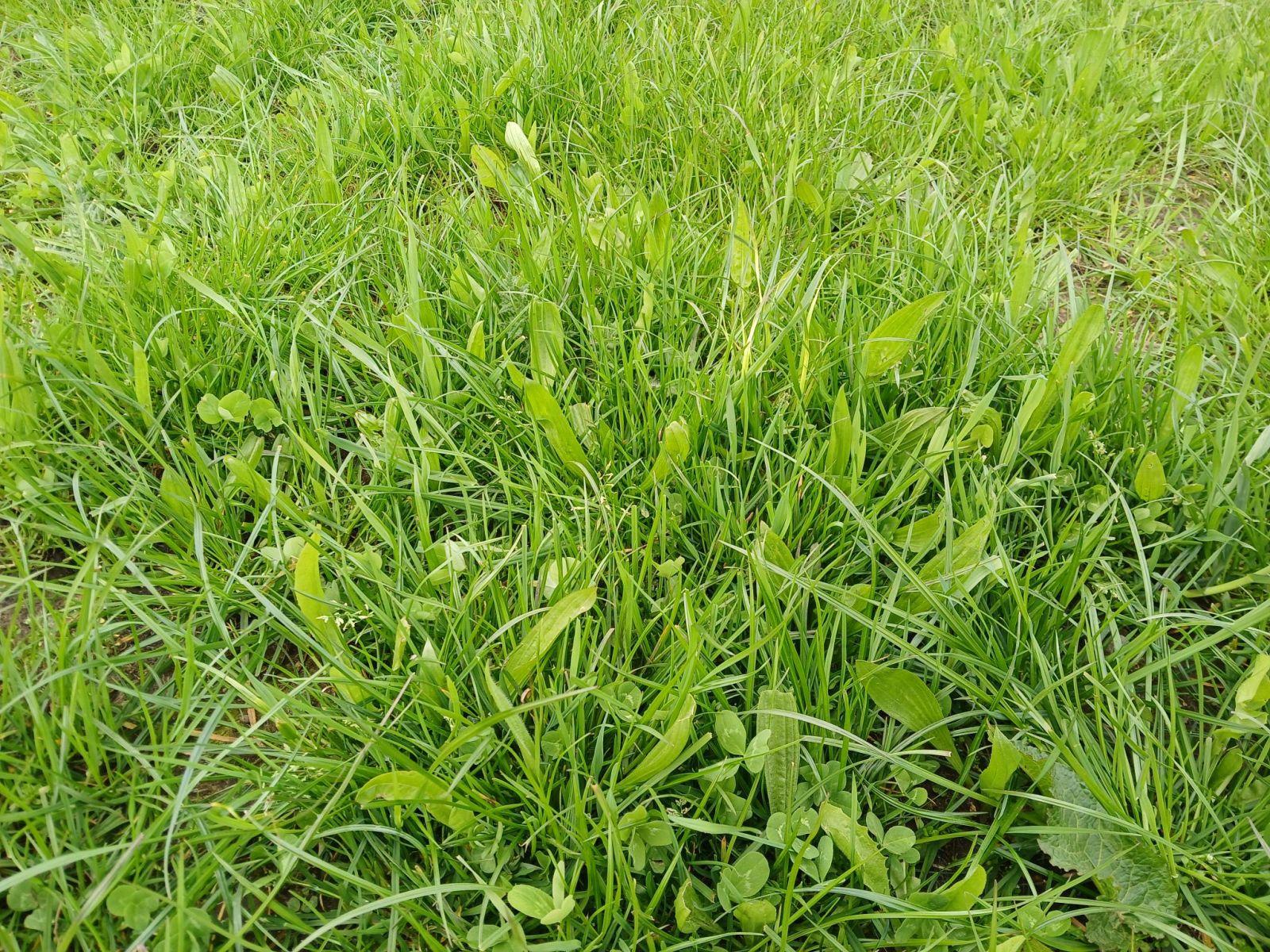
Applying liming products to soils has a positive effect on the yield of crops, if the soil pH is below the optimum level for nutrient uptake. However, there is also a cost for the carbon footprint for the farm from the release of carbon dioxide (CO2) to the atmosphere from mining, production and application of lime. Increasing the soil pH above 6.2 has been shown to reduce the greenhouse gas nitrous oxide (N2O) but the evidence is not conclusive. Increasing soil pH to an optimum was seen to enhance soil microbial biodiversity but can reduce species sensitive to low pH conditions i.e., in acidic grasslands.
Application of liming products to raise the soil pH in acidic soil conditions has been practised for thousands of years to maintain or improve yield, as crops respond with increased growth to an optimum soil pH. However, there is a cost for the application of liming products with the emission of carbon dioxide (CO2). Previous research on the effects of soil pH has shown that an optimum soil pH allows the most efficient use of applied fertilisers, which helps prevent costly losses of fertiliser from the system through various forms of pollution (leached from the soil into water sources or lost via gaseous emissions).
A literature review was undertaken for Scottish soils, including studies from similar soils and climates, to the effects of optimising soil pH on the emissions of the greenhouse gas N2O, along with any evidence of mitigating effects on soil organic matter dynamics and microbial diversity.
Liming and nitrous oxide (N2O) emissions
The impact of liming on N2O emissions is still poorly understood and likely to be highly site specific, which requires further research. There was good evidence from an extensive French study that increased pH decreased N2O emissions in the majority of cases.

Image: static chambers for nitrous oxide gas flux sampling (Photo Credit: Rose Boyko, SRUC)
In other studies, it was seen that good soil structure from the application of lime to promote microbial activity, root growth and aggregate stability, allowed better drainage of the soil and reduced soil moisture, especially in wetter Scottish soils, reducing N2O from nitrification losses. When N2O reductions did occur, they appeared across the more acid soil pH’s, however, the decrease was nonlinear and potentially had a change point around pH 6.2 above where the reduction of N2O was maximised up to pH 6.8.
Soil microbial biodiversity
Scientific literature suggested a general agreement that increasing pH had a positive impact on soil macro and micro-organisms (either through increased biodiversity or increased activity).
An increased soil pH generally gave greater soil microbial diversity; however, this could decrease the microbes that were more adapted to lower soil pH, especially for ecosystems that have a lower pH, i.e. acidic grasslands, therefore the ecological nature value of these need to be considered. Yields and soil biomass of grassland mixed swards with clover appeared more resilient in soils with a higher pH.

Image: multispecies sward with clover and plantain (Photo Credit: John Newbold, SRUC)
Earthworm numbers were reduced at lower soil pH’s; therefore, it would be beneficial to encourage a soil pH above 4.5. Increased earthworm numbers would have advantages in improving soil structure and thus increased soil water infiltration and increased soil organic matter incorporation, resulting in enhanced nutrient turnover as well as in increased bird numbers that feed on the earthworms.

Image: healthy soil with earthworm activity (Photo Credit: Paul Hargreaves, SRUC).
Liming production and application
There is a cost of CO2 emissions associated with the mining, production, distribution and application of lime used to increase soil pH, which all adds to the carbon footprint from the farm. Although, this is counterbalanced by increasing crop growth and yield. Where there are increased crop residues these have been linked to increased growth and can provide more C to the soil as organic material. However, how this translates to soil C storage is less certain. Some studies show a reduction in soil C due to increased microbial consumption of organic material, leading to increased respiration (CO2). Whereas other research, on long-term studies, reveal an accumulation of stable soil organic matter, up to a 20 % increase in soil C over 129 years in a managed grassland.
Circumstances under which liming is not appropriate in the Scottish context
Scottish soils, as with other acidic UK soils, should be managed with precision to reduce excess nutrient or natural resource use. It is important that soils should not be over-limed, which can reduce yields. Calculations using the information provided by Scottish Farm Advisory Service (FAS), related to the specific crop grown, rainfall amount, soil type and past cropping would ensure the correct amount of lime is applied.
A regular application of liming material and soil testing of fields for soil pH would help reduce the overall CO2 emissions once an optimum soil pH for that agricultural system has been reached.
If land use targets are for habitat conservation or minimising soil disturbance, conservation practices should be followed. A suggestion of liming soils is not a blanket statement, it is situational and particular to each soil environment and ecosystem. Liming can be detrimental to acidic soil ecosystems that support a unique habitat for acid tolerant organisms and plant species (e.g. acid grassland), as over liming could negatively impact this biodiversity. Liming of peaty soils can be damaging to the ecosystem and increase CO2 emissions. New Good Agricultural Environmental Conditions (GAEC) for 2025 was announced on 24th June 2024 by the Scottish Government in the Agricultural Reform Route Map (ruralpayments.org) prohibiting use of lime on peatlands.
Policy, advice and/or behaviour changes to mitigate liming
Alternatives to lime to increase the soil pH were considered as part of the study, including biochar, but there were many unknowns in using these products especially as they have not been tested on a wide variety of Scottish soils. However, some advantages had been seen from the literature including reductions of N2O, increased soil C and yields and would be an area to concentrate future studies.
Alerting farmers to the benefits of maintaining an optimum soil pH and the savings on fertiliser would be advantageous. Included in this should be an explanation of why this should be linked to soil testing to ensure a more precise application. The emphasis should be on providing sufficient, not excess, nutrients for the crop and soil type at the correct time to align with precision agriculture methods, using GPS and a grid system of soil sampling, as suggested in Scottish net zero emissions targets. Regular application and soil testing of fields for soil pH would reduce the risk of over or under liming and provide advantages to reduce cost and potentially mitigate GHG emissions.
Consideration and implications for areas where liming would have a negative impact such as peaty soils and acidic grassland should be provided, especially in upland grazing areas.
Read the full report here.
Research Leads
Dr Paul Hargreaves (Paul.Hargreaves@sruc.ac.uk) SRUC South and West Faculty, Dumfries
Dr Stephanie Jones (Stephanie.Jones@sruc.ac.uk) SRUC Central Faculty, Edinburgh
Dr Rosie Boyko (Rose.Boyko@sruc.ac.uk) SRUC Central Faculty, Edinburgh
Further Information
FAS Technical Note (656) (2014). Soils information, texture and liming recommendations. Scotland’s Farm Advisory Service (FAS), Scottish Rural Development Programme (SRDP), SAC, Edinburgh, UK.
Climatexchange (2020). Marginal abatement cost curve for Scottish agriculture. Edinburgh’s Centre for Carbon Innovation, Edinburgh, UK.